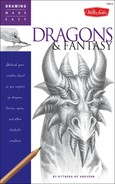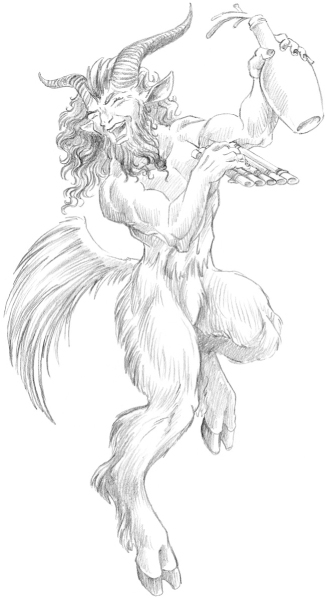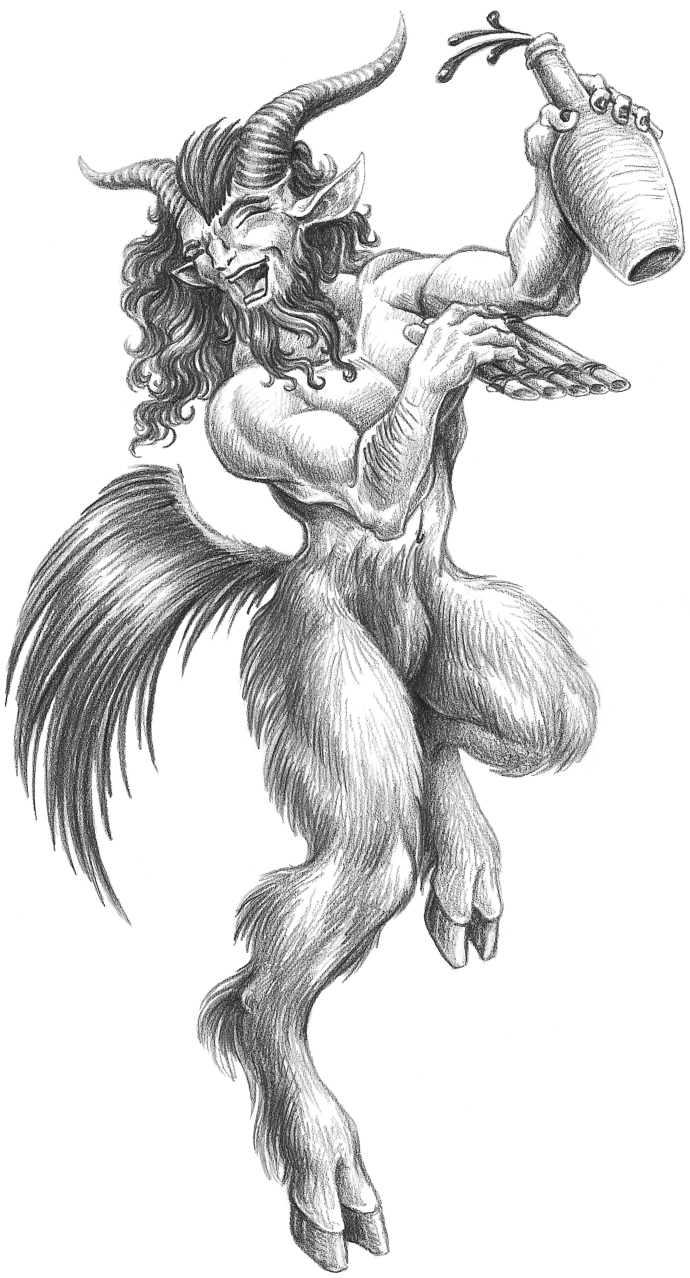Half human and half goat, satyrs are known for being wild and carefree. They’re also known for their love of spirits—all too fitting, as they are the companions of Dionysus, the Greek god of wine. Revelers by nature, they’re often seen playing musical instruments, especially the panpipe. In mythology, satyrs are almost exclusively male—but don’t let that put a damper on your creativity.
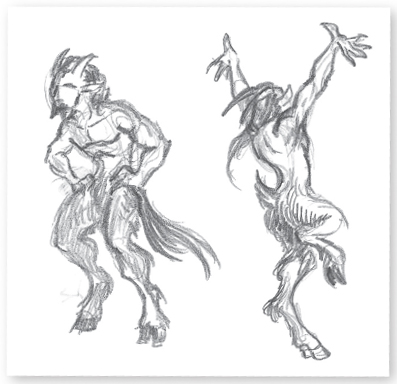
Satyr Features Satyrs’ legs resemble the hind legs of a goat. They also have goatlike horns and ears, and they usually wear their curly hair and beards long. Some paintings on Greek pottery show satyrs with long horse tails (left), rather than short goat tails (right).
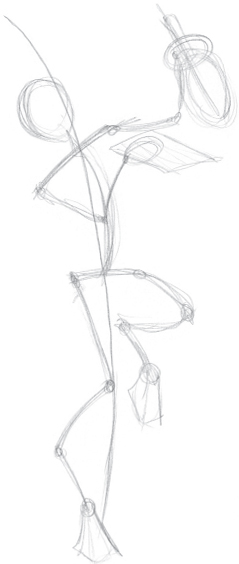
Step 1 I start by drawing the line of action with an HB pencil; then I work out the placement of the figure. I want my satyr to look happy and carefree, so I place him on one hoof with his head tilted back, as though he’s dancing. One arm is raised as if to bring panpipes to his lips or to hold them down as he gives a shout of joy. His other arm is raised up high, holding a bottle of wine. When positioning the legs, I keep in mind that goats and other hoofed animals actually walk on their tiptoes, so I use shapes that reflect this.
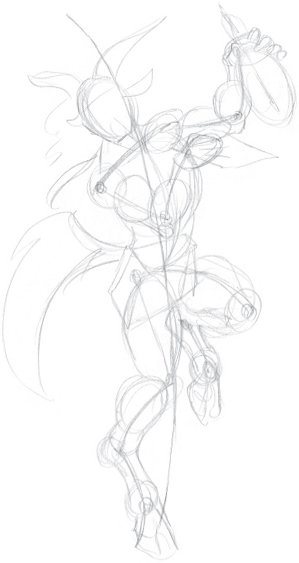
Step 2 When I’m happy with the pose, I use the HB pencil to develop the forms using basic shapes. I want my satyr to look like he’s in motion, prancing about and enjoying himself. To help show this, I position the head as though he’s looking back over his shoulder. I decide to give him a horse’s tail so that it streams out behind him as he dances. The raised tail shows that he’s in high spirits.
Step 3 Once I have the basic shapes down, I develop the forms of the body, defining the fingers, hooves, wine bottle, and panpipes; then I add the facial features, with the mouth open as if he’s shouting with joy, and the goatlike ears. I also suggest the shaggy fur around the hips and fill in the bushy tail. Next I draw a few splashes of liquid from the top of the bottle to suggest movement.
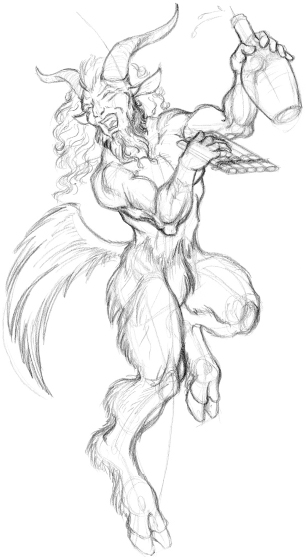
Step 4 I continue refining the forms and darkening lines with the HB pencil. I notice that the angle of the panpipes is a bit off, so I make the necessary adjustments, including the position of the fingers. Then I add details to the face, hair, beard, and horns. I continue suggesting the fur on the lower half of the body, quickly hatching to create the shaggy fur on the backs of the legs.
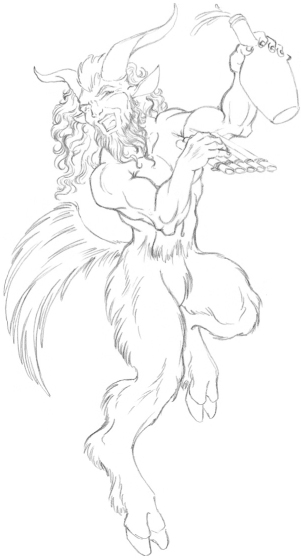
Step 5 Once I’m satisfied with the satyr, I place my sketch on a light table and transfer the drawing to a clean sheet of paper.
Step 6 Now that I have a clean drawing, I start shading the entire body with the HB pencil and light hatching. To make the legs look like they’re covered in long fur, I keep my hatchmarks farther apart from one another, following the curves of the muscles.

Step 7 Now I create the darkest areas with a 2B pencil, especially concentrating on the hair, tail, and beard. Then I carefully shade the horns to further define the ridges, lifting out highlights here and there with a kneaded eraser. Now I focus on the legs, using widely spaced hatchmarks that follow the shape of the limbs. For darker areas on the legs, such as the area of the leg and foot that are tucked under the raised thigh, I build up layers of hatching. Next I lightly indicate some hair on the satyr’s right arm, just to make him look a little more shaggy and wild.
Step 8 Now I go over the deepest shadows with a soft 4B pencil, using the 2B and HB pencils to blend the shadows into the lighter areas where necessary. I especially do this with the hair on the legs, which I continue to build up with layers of hatching using all three pencils. I roughly shade the bottle with horizontal strokes to give it some texture. After I darken the shadows on the horns and hooves, I use a kneaded eraser to lift out some highlights, making the horns and hooves look shiny. When I’m satisfied with the rest of the shading, I darken the hair on the forearm. Now my satyr’s ready to frolic!
